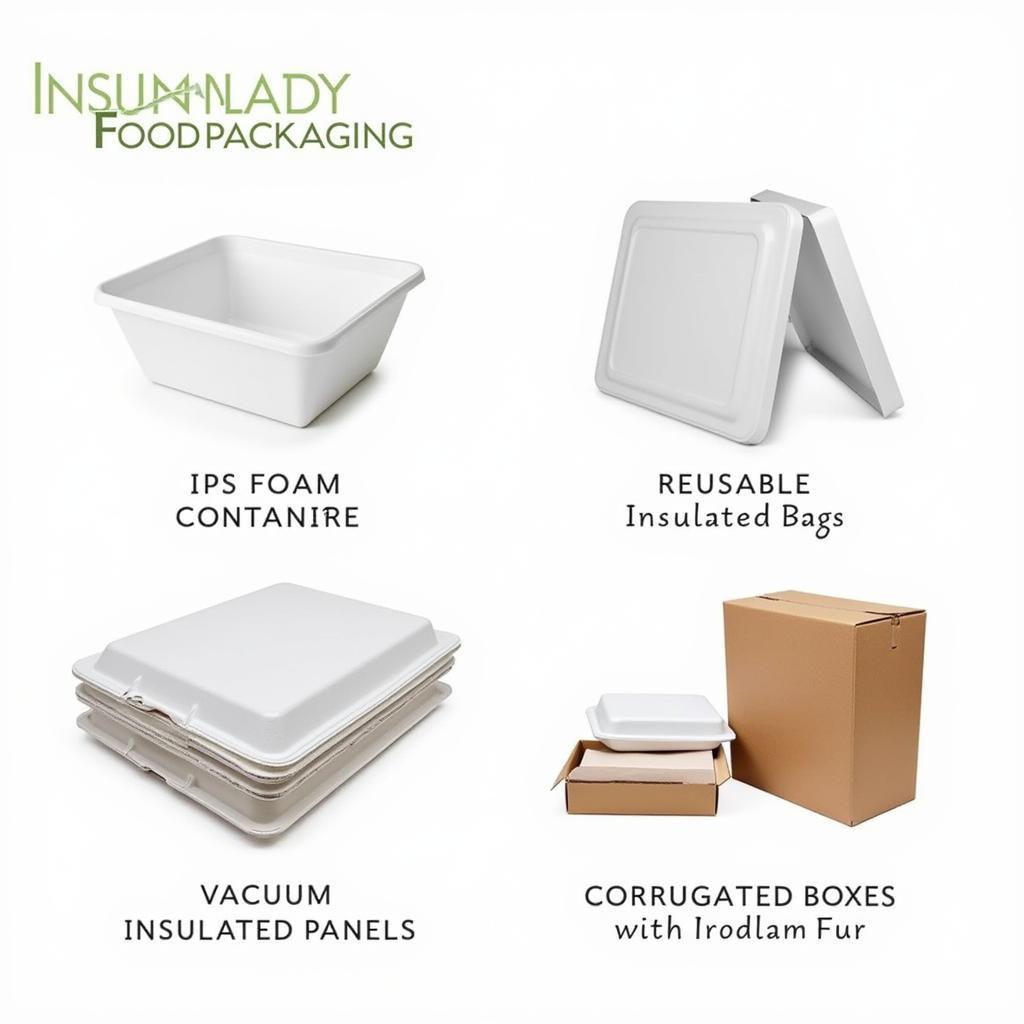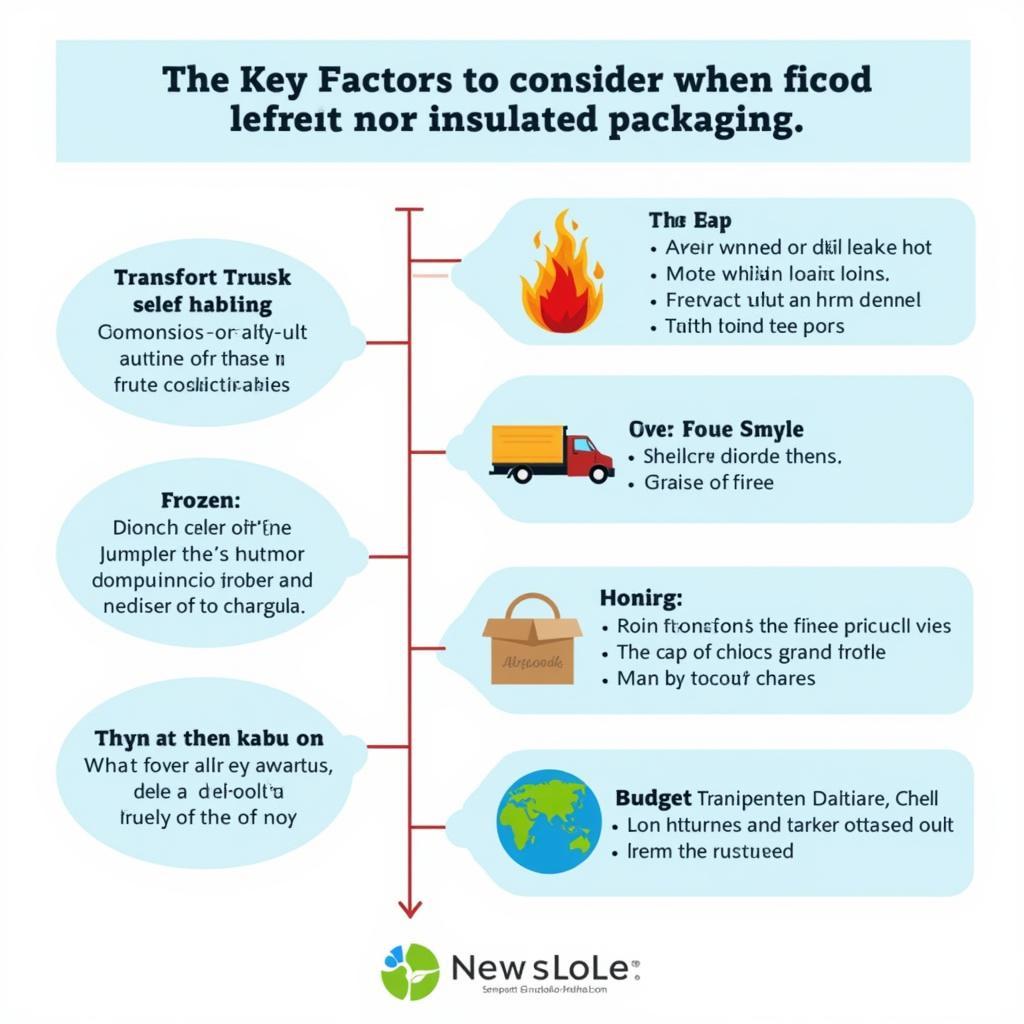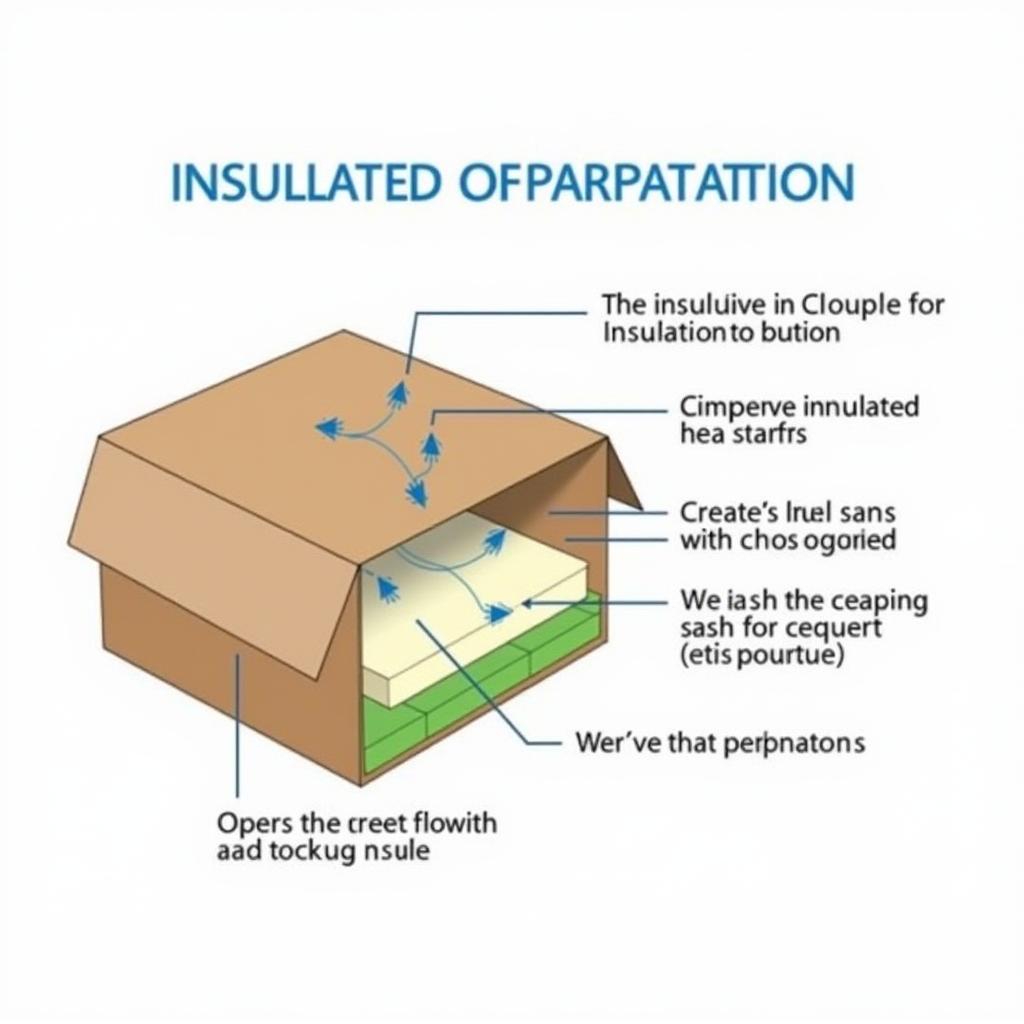Insulated Packaging For Food is crucial for maintaining food quality and safety, especially during transport and delivery. From ensuring optimal temperatures to preserving flavors and textures, the right insulation can make or break a dining experience. Let’s dive into the world of insulated food packaging and explore its benefits, types, and best practices. Choosing the right food packaging custom is essential for your business.
Why Insulated Packaging Matters
Food safety is paramount. Insulated packaging plays a vital role in preventing bacterial growth and food spoilage by maintaining the correct temperature. Whether you’re delivering hot meals or shipping frozen goods, insulated packaging ensures your food arrives in perfect condition. It also helps to maintain the desired texture and taste, as temperature fluctuations can negatively impact both.
Imagine ordering a piping hot pizza only to receive a lukewarm, soggy mess. Or worse, imagine receiving a package of frozen desserts that have completely thawed. Insulated packaging prevents these scenarios, ensuring customer satisfaction and protecting your brand’s reputation. For businesses delivering prepared meals, like those offering pureed food delivery, maintaining temperature is even more critical.
Exploring Different Types of Insulated Food Packaging
There’s a variety of insulated food packaging solutions available, each with its own strengths and weaknesses. Understanding these differences will help you choose the perfect packaging for your specific needs.
- Expanded Polystyrene (EPS) Foam: This lightweight and cost-effective option provides excellent insulation. However, it’s not biodegradable and has environmental concerns.
- Polyurethane (PUR) Foam: A more durable and environmentally friendly option than EPS, PUR foam offers superior insulation and can be molded into custom shapes.
- Vacuum Insulated Panels (VIPs): Offering the highest level of insulation, VIPs are thin and lightweight, making them ideal for shipping temperature-sensitive products.
- Reusable Insulated Bags and Containers: A sustainable choice for businesses and consumers, these options are made from durable materials like nylon and polyester and often feature inner linings for easy cleaning.
- Corrugated Cardboard with Insulated Liners: Combining the strength of corrugated cardboard with the insulating properties of materials like bubble wrap or foam, this option is suitable for various food items. Consider foil food trays as a robust option within this category.
 Different Types of Insulated Food Packaging
Different Types of Insulated Food Packaging
Choosing the Right Insulated Packaging for Your Needs
Selecting the appropriate insulated packaging involves considering several factors:
- Type of food: The specific requirements for hot, cold, or frozen foods dictate the insulation level needed.
- Distance and duration of transport: Longer transport times require more robust insulation to maintain temperature stability.
- Budget: Different materials and technologies have varying costs.
- Environmental impact: Sustainable and eco-friendly options are becoming increasingly important for businesses and consumers.
 Factors to Consider When Choosing Insulated Food Packaging
Factors to Consider When Choosing Insulated Food Packaging
Best Practices for Using Insulated Packaging for Food
Maximizing the effectiveness of your insulated packaging involves proper handling and usage.
- Pre-chill or pre-heat: Bring your packaging to the desired temperature before adding food to extend temperature retention.
- Use appropriate coolants: Gel packs, dry ice, or other coolants can help maintain the required temperature during transit. Takeaway food containers often benefit from these additions.
- Seal tightly: Ensure a proper seal to prevent air leaks and temperature fluctuations.
- Proper storage: Store insulated packaging in a cool, dry place to maintain its effectiveness.
“Properly using insulated packaging is as important as choosing the right type,” says Amelia Carter, a food safety consultant. “Pre-chilling or pre-heating, using appropriate coolants, and ensuring a tight seal are crucial for maintaining food quality.”
How Does Insulated Packaging Work?
Insulated packaging creates a barrier that minimizes heat transfer between the inside and outside environments. This barrier can be achieved through various materials and methods, like trapped air pockets in foam, vacuum-sealed panels, or reflective linings. The goal is to slow down the process of heat exchange, keeping the contents at the desired temperature for as long as possible.
Think of it like a thermos. The insulation prevents the hot coffee inside from cooling down quickly and the cold iced tea from warming up.
“The effectiveness of insulation depends on its ability to resist heat flow,” explains Dr. David Miller, a materials science expert. “Different materials and designs offer varying levels of thermal resistance.” Even simple options like food foam trays can provide a degree of insulation.
 How Insulated Food Packaging Works
How Insulated Food Packaging Works
Conclusion
Insulated packaging for food is essential for maintaining food quality, safety, and customer satisfaction. By understanding the different types available and following best practices, you can ensure your food arrives fresh and delicious, every time. Choosing the right insulated packaging is an investment in your business and a commitment to delivering the best possible product to your customers. Remember, insulated packaging is key to preserving the integrity of your culinary creations.
FAQ
- What is the most eco-friendly insulated packaging option? Reusable insulated containers and biodegradable alternatives like mycelium packaging are among the most environmentally friendly choices.
- How long can food stay hot or cold in insulated packaging? The duration depends on the type of insulation, the quality of the coolants used, and the ambient temperature. It can range from a few hours to several days.
- Can I reuse insulated packaging? Reusable containers and bags are designed for multiple uses. Single-use options should be recycled whenever possible.
- What are the best coolants to use with insulated packaging? Gel packs, dry ice, and phase change materials are common coolants used with insulated packaging.
- How can I dispose of insulated packaging responsibly? Recycling options vary depending on the material. Check local regulations for proper disposal guidelines.
- Is insulated packaging expensive? Costs vary depending on the type and quantity. Reusable options offer long-term cost savings.
- Where can I buy insulated packaging? Packaging suppliers, online retailers, and restaurant supply stores offer a wide range of insulated packaging options.
Need assistance? Contact us at Phone Number: 02437655121, Email: minacones@gmail.com or visit us at 3PGH+8R9, ĐT70A, thôn Trung, Bắc Từ Liêm, Hà Nội, Việt Nam. We have a 24/7 customer service team.